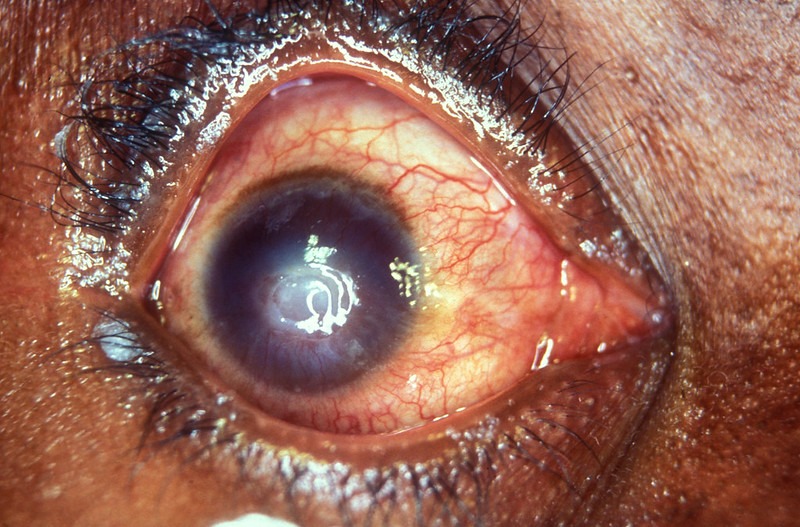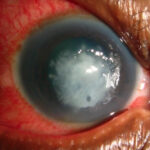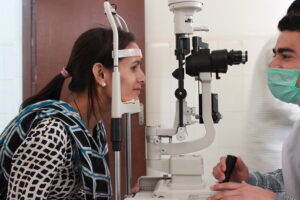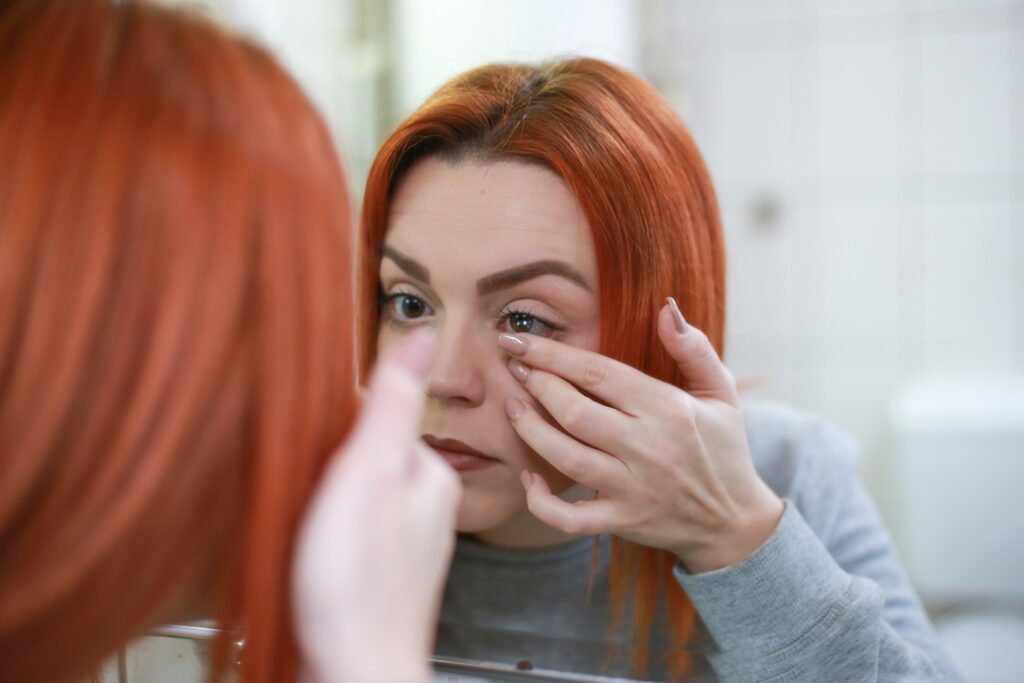What is a Cornea?
A corneal ulcer is an open sore on the cornea, the transparent front part of the eye, usually caused by infection or injury, leading to pain, redness, blurred vision, and discharge. The cornea is the clear outer surface of the eye. It is present just before the iris and the pupil, enabling light to enter the eye. It is one of the crucial elements of the human eye.
The cornea is protected by a layer of tears, covering the cornea from foreign particles and infections. This outer layer acts as a protective covering.

Our eyes act like a camera, and the cornea is the window through which light passes into the eye. As light enters your eye, it is refracted or reflected off the curved edge of the cornea.
Changes in the shape of the cornea can cause refractive difficulties such as myopia, hypermetropia, and astigmatism.
What is a Corneal Ulcer?
A corneal ulcer (also known as Keratitis) is a lesion in the eye’s cornea usually caused by infection. For example, even a minor injury or wearing contact lenses for a long time can lead to ailments, and this causes ulcers.


Watch about Corneal Ulcer on Shekar Eye Hospital YouTube Channel.
Corneal Ulcer Symptoms:
Symptoms of corneal ulcers are as follows:
● Inability to see the bright light
● Watery eyes
● Itchy eyes
● Burning sensation in the eyes
● Pus-like discharge from the eyes
● Blurred vision
● Swelling of the lids
● If the ulcer is large, a white or grey round spot appears on the cornea
● Severe pain
Causes of Corneal Ulcer
● Acanthamoeba Keratitis:
This infection happens to those wearing contact lenses. It is a type of amoeba infection, and in rare cases, it can cause loss of vision.

● Fungal Keratitis:
This fungal infection develops when the cornea is injured by a plant or something related to the plant. It can also develop in those with a weakened immune system.
● Bell’s Palsy:
Disorders such as Bell’s palsy affect the eyelids and cause your eyes not to close completely. Due to this the cornea can become dry, and the chances of ulcers increase.
● Herpes Simplex Keratitis:
Herpes simplex keratitis is a viral infection that causes repeated sores in the eye. It can happen due to many reasons such as stress, prolonged exposure to sunlight or a weak immune system.
Other causes of corneal ulcers include:
● Contact lens infection due to bacteria.
● Viral infection
● Deficiency of Vitamin A
● Many people who wear expired soft contact lenses or disposable contact lenses (even at night) for a long time are at a higher risk of corneal ulcers.
Corneal Ulcer Diagnosis:
An ophthalmologist diagnoses a corneal ulcer during an eye exam. First, the doctor performs a fluorescein eye stain test to check for corneal ulcers. In this test, the doctor puts a drop of orange dye on the blotting paper. The doctor then transfers the dye to the eye by touching the blotting paper to the eye’s surface, then examines the damaged area under the light of a microscope called a slit lamp.

When this light falls on the cornea, the damaged area appears green. If the doctor thinks you have a corneal ulcer due to an infection, they may take a tissue sample from the ulcer side of the eye and send it to the lab to identify the organism causing the corneal ulcer.

Corneal Ulcer Treatment:
❖ Keep these things in mind at home:
● Don’t wear contact lenses at home.
● Avoid touching and rubbing your eyes frequently.
● To avoid infection, touch the eyes only after washing hands and wiping thoroughly with a towel.
❖ Medicines:
Your doctor will give you antibiotic eye drops because the leading cause of corneal ulcers is an infection. If the condition is severe, you may need the eyedrops inserted every hour. In addition, oral pain killers can be given to relieve the pain.

❖ Surgery:
Severe corneal lesions may require a corneal transplant (Keratoplasty). The diseased or injured cornea is removed in this procedure, and the new cornea is carefully attached with small sutures.
The joints are usually removed at the end of treatment, a few weeks after surgery. Most people feel an improvement in their vision a few days after surgery. However, in some cases, a two-day hospital stay is required.
Conclusion:
Corneal ulcers can damage your vision badly and even make you blind if not treated on time. The best way to prevent corneal ulcers is to see a doctor as soon as you notice any symptoms of an eye infection or an eye injury. Apart from this, take other precautions such as:
● Do not wear contact lenses while sleeping.
● Clean your contact lenses before & after wearing them.
● Wash hands thoroughly before touching eyes.
● If anything gets in the eye, wash immediately with water.








